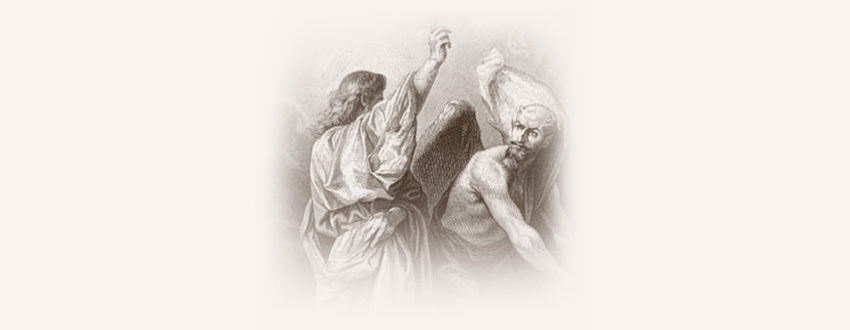
Lent, a Season of Healing
In This Edition :
- Lent, Fasting, Devotion to the Holy Face
- Website News
- Community News
“Begone Satan, for it is written,
‘The Lord your God shall you worship
and Him only shall you serve.'”
– Gospel, First Sunday in Lent
Dear Friends of Carmel,
This holy time of Lent is upon us again.
The Season of Lent reminds us of the necessity for fallen mankind, of which we are all members, to be actively united with the redeeming work of our Savior by a spirit of penance. By its fasting and other penitential works, Lent enables us to associate ourselves with this work very closely. “No Lent is worthy of the name without a personal effort of self-reformation, of leading a life more in accordance with God’s commands and an attempt by some kind of voluntary self-denial to make reparation for past negligence. (St. Andrew’s Missal) There is then this important expiatory side to our penitential efforts which, under the Church’s guidance, we now begin, but the greater emphasis will always be on mercy, Divine clemency and pardon. We implore this mercy in all the beautiful liturgical prayers and readings of Lent, and we offer in sacrifice, ourselves and our sufferings, both small and great. We undertake the great work of reparation (repairing) – for ourselves and for all sinners – and of purifying what is stained, soiled, and even to some extent, ruined, and of setting things right.
Fasting
One frequent request from our Newsletter readers is that we speak about traditional Catholic practices and customs. Now remember, “traditional” means what has been handed down to us from our ancestors in the Faith: the Apostles, the Saints throughout the centuries. (Latin: tradere: to hand down, to hand over) These people, in addition to having been much holier than we, were much wiser. So it is not always true that “new and improved” is better – and in no case is this truer than the practices of our holy Catholic Religion.
In one of our last Lenten newsletters we spoke about The Stations of the Cross. This year, we want to take just a few moments to comment on the practice of fasting. In these days, the Church is much more lenient on the rules and days required for fasting as in previous years. But there are many who keep the centuries-old practices, who fast on all the days of Lent. Why do they do it? What is so powerful about fasting?
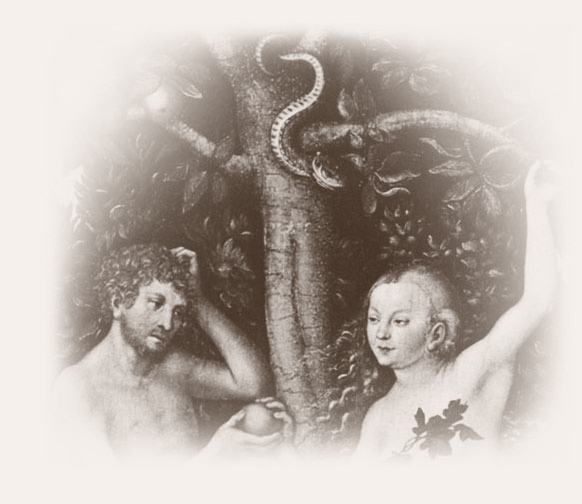
To say fasting is an “age old” custom would be quite an understatement. From the beginning of creation, our first parents were commanded to observe a type of fasting: “Of the Tree of the Knowledge of Good and Evil you shall not eat,” God said. Adam committed the first sin of pride when he broke that fast. So we, in some small way, make reparation when we do fast. Already, you can see something of the connection between fasting and indulgence (forgiveness).
After the Flood, God shortened the life of man. He weakened him, due to his sins. But he compensated in also giving man flesh-meat to eat (man had formally been a vegetarian), to strengthen him in his weakened state. Depriving ourselves of meat (called abstinence), and limiting the amount of food we eat (fasting), reduces our body to that weakened state. It makes us experience and know our frailty, our weakness, and what we are of ourselves.
Fasting is an act of humility, and Our Lord loves humility more than any other virtue. In this world of self-sufficiency and independence, where we so often forget just how much we need Him, it is an expression of our dependence. It is for this reason that fasting is so often intimately connected with prayer. Humility is important in having our prayers heard.
The Old Testament is replete with examples of fasting, from the Prophet Elias and all the prophets, to Tobias, Judith, Jonas and Job. The practice, of course, was continued and epitomized by Our Lord Himself. Before starting His public life, He went to the desert and fasted forty days. Before waging his public battle with Lucifer, He gave us this all important example. He recommended it to his apostles: “Some can only be cast out by prayer and fasting.” Exorcists often attest to the power of fasting. What better way, what better weapon do we have, in undertaking this war against our vices, our sins, and against the devil himself, this war that we will be fighting during the season of Lent?
Read and hear what the Scriptures, the Church and the Saints have to say on the subject:
Prayer is good with fasting and alms, more than to store up treasures of gold.
– Tobias 12:8
Know that the Lord will hear your prayers, if you continue with perseverance in fastings and prayers in the sight of the Lord.
– Judith 4:11
Fasting is most intimately connected with prayer. For the mind of one who is filled with food and drink is so borne down as not to be able to raise itself to the contemplation of God, or even to understand what prayer means.
— Catechism of the Council of Trent
Fasting cleanses the soul, raises the mind, subjects one’s flesh to the spirit, renders the heart contrite and humble, scatters the clouds of concupiscence, quenches the fire of lust, and kindles the true light of chastity. Enter again into yourself.
— St. Augustine
Without mortifying the taste, it is impossible to preserve innocence, since it was by the indulgence of his appetite that Adam fell.
– St. Catherine of Siena
Our primitive rule states that we must pray without ceasing. If we do this with all the care possible — for unceasing prayer is the most important aspect of the rule — the fasts, the disciplines, and the silence the Order commands will not be wanting. For you already know that if prayer is to be genuine, it must be helped by these other things; prayer and comfortable living are incompatible.
– St. Teresa of Avila, The Way of Perfection
You can read more about the practice and spirit of Penance (of which fasting is only one expression) here in one of our previous Lenten newsletters. We hope that these readings will help to diminish some of the proverbial “gloom and doom” of Lent, and help you to see this Season for what it is, a grace and a great gift – a much needed medicine which stings, but heals the soul.
Devotion to the Holy Face
The whole of Lent is meant to increase our devotion to and understanding of the Passion of Our Lord Jesus Christ. One aspect of this devotion is found in the contemplation of His Holy Face. Devotion to the Holy Face is one of the oldest in the Christian tradition. This venerable devotion was practiced by such great saints as St. Augustine of Hippo, St. Bernard of Clairvaux, St. Gertrude the Great, St. Mechtilde, St. Edmund, St. Bonaventure and St. Therese of Lisieux. Beginning in 1844, Our Lord appeared to Sr. Mary of St. Peter and expressed His desire that the whole world should know and practice this devotion in reparation for man’s blasphemy. Through the efforts of Sr. Mary St. Peter, Ven. Leo DuPont and countless others, this devotion has become one of the most loved, and remains one of the most needed in our time. Several books tell the history, as well as the meaning of this beautiful devotion.
The prayer of St. Therese, full of compassion, hope, and apostolic love, is not as well known as it might be:
O Jesus, who in Thy bitter Passion, became “the most abject of men, a man of sorrows”, I venerate Thy Sacred Face whereon there once shone the beauty and sweetness of the Godhead; but now it has become for me as if it were the face of a leper! Nevertheless, under those disfigured features, I recognize Thy infinite Love, and I am consumed with the desire to love Thee and make Thee loved by all men.
The tears which well up abundantly in Thy sacred eyes appear to me as so many precious pearls that I love to gather up, in order to purchase the souls of poor sinners by means of their infinite value. O Jesus, whose adorable face ravishes my heart, I implore Thee to fix deep within me Thy divine image and to set me on fire with Thy Love, that I may be found worthy to come to the contemplation of Thy glorious Face in Heaven. Amen.
We also wish to share what St. Thérèse’s sister Celine wrote about this devotion in the Saint, since it is an excellent summary of the manner of approaching it, the thoughts and feelings inspired by it:
Devotion to the Holy Face was for Therese the crown and complement of her love for the Sacred Humanity of Our Lord. The Blessed Face was the mirror wherein she beheld the Heart and Soul of her Well-Beloved. Just as the picture of a loved one serves to bring the whole person before us, so in the Holy Face of Christ, Therese beheld the entire Humanity of Jesus. We can say unequivocally that this devotion was the burning inspiration of the Saint’s life… Her devotion to the Holy Face transcended, or more accurately, embraced, all the other attractions of her spiritual life.
Website News
Holy Face Devotional Items
Besides the books that we offer which speak more about the devotion to the Holy Face, we also offer medals, a relic badge, and the Holy Face chaplet, in order to assist the faithful in their devotion. The Holy Face chaplet is especially poignant for our times, since it is prayed for the triumph of Holy Mother Church and the downfall of Her enemies. We all know that in these days, She has many enemies!
Cross and Crown Book Series
You will recall our offerings of these special books. We can tell you that although we knew there would be interest, we did not expect them to “fly off the shelves”! All we can say is that we are edified at how fervent is the desire among Catholics to learn, to be instructed by the wise, to make progress in the vocation we all share: union with God in our life on earth, to prepare for our eternity with Him in Heaven.
One small note about the books. If you occasionally return to the selection, you may notice price changes. Our effort is to locate the books at a good price we can pass onto you. But we’ve learned that the rarer the book, the higher the price. That’s life in the real world – and in this case, the book world!
The title especially appropriate for the Lenten season is The Cross and the Christian. Sweet and consoling, as well as stern and hard-hitting, the book presents faithfully the beautiful doctrine of the Cross and suffering in Christian life. But it also affirms many other doctrines of our Faith, elucidating them in the context of the true meaning of suffering in our lives. Of course, Christ our Savior is at the center of all this: the purpose of His Incarnation, the mystery of His own sufferings and the Cross, the virtues He would have us learn – humility, patience, prudence, clarity of judgment, etc. Again and always, there is the notion of progress and growth, of transformation in Christ! We share a small quote from this book by Fr. Régamey from a section he called O CRUX, AVE, SPES UNICA:
Thus, suffering is not the Cross, and it does not of itself lead to the Cross. If this is so, how is it that many through suffering, have been transformed as if by the Cross? Is it not because they have found at the heart of their suffering the cross of Jesus – veiled perhaps, but very real?
To ask this question is almost to answer it. Let us observe what happens. To suffer and yet not fall into despondency or insensibility, nor to swell with pride, but to grow both in strength and in sweetness, is to bear witness to the presence within us of a principle of life that is victorious over disorder. And what an astonishing principle since disorder is so terrifying! How can we suffer the cruelty of nature or of men and not have our hearts lacerated? It is impossible unless we believe with our whole being in a harmony to which we are attuned, a harmony so perfect that it resolves this very cruelty into its own peace. We may fail to become aware of this harmony through prejudice, misunderstanding, or inattention, yet we must not forget that ours is the faith of the children of the heavenly Father. By our very lives, we affirm that Goodness watches over the course of things and that even the causes of suffering do not defeat it, for it transcends and penetrates these very causes. Infinite Goodness! Ours is truly a supernatural faith.
When we suffer, as at times we must in this world, and yet grow in sweetness and strength, it is because divine grace is transforming our egoism into a hope and charity that are perhaps heroic. A principle of life that is not found in suffering itself will have transformed our self-love. This principle is living faith. Suffering will have been necessary to its advent and progress…
The Liturgical Year
We were also pleased to see how popular the single volumes of the Liturgical year (Advent and Christmas) were. We cannot extol enough this great work of Dom Prosper Guéranger, which describes these Liturgical Seasons in such beauty and depth. It is said that the Liturgy is the “normal means of sanctification.” And it is easy to see why: all that we need to become Saints is given to us through the Liturgy. For a limited time, we will be once again giving you the opportunity to buy individual volumes (there are too many for us to keep well stocked all year). We would particularly recommend the Passiontide & Holy Week Volume, which concentrates on the many special ceremonies of the Triduum which so often are left unexplained, and therefore, unappreciated.
For children, we recommend this Holy Week Missal for Children, which has many bright illustrations and simplified prayers to help hold the attention of the little ones.
Rosary Orders
Holy Week is a special time of prayer and retreat for our Community. As was the case last year, we will not be accepting any rosary orders during that time. We know that there are many First Communions that are coming up around that week. If you are planning on ordering a rosary as a First Communion gift, it would be a good plan to do so before then.
New Greeting Cards
We have added to our selection of greeting cards, with attractive new Easter, Baptism, Confirmation and Ordination designs. We invite you to take a look. The cards often are a gift in themselves, but also make a lovely accompaniment to any gift you may give.




Community News
This section of our newsletter will be somewhat brief! Our days are so very full that keeping up with everything has truly been a challenge. From sewing to construction and everything in between, many projects (some which have been in the planning for years) have converged and come to a head all at once in the last couple of months. We will include some pictures from the last two weeks to supply for some of the “community news,” and we hope to update you on the larger projects in a few months, when some of them will be completed – and others, well underway
In the meantime, let us all “go up to Jerusalem.” Not even the business of our days can disrupt the peace and solitude of soul that comes with Lent. Lent is a difficult, but holy time. Carrying the cross is never easy. But Our Lord walks with us, and oh, how sweet that is!
Know of our prayers for all of you as we all undertake this cherished journey once again, to die to ourselves and rise again with Our Lord at Easter.
My dearest Jesus, teach me to be patient,
when all day long my heart is troubled by little,
but vexatious crosses.
(300 days Indulgence, composed by Cardinal Merry del Val)
A very Blessed Lent to you all!
Your Carmelite Sisters




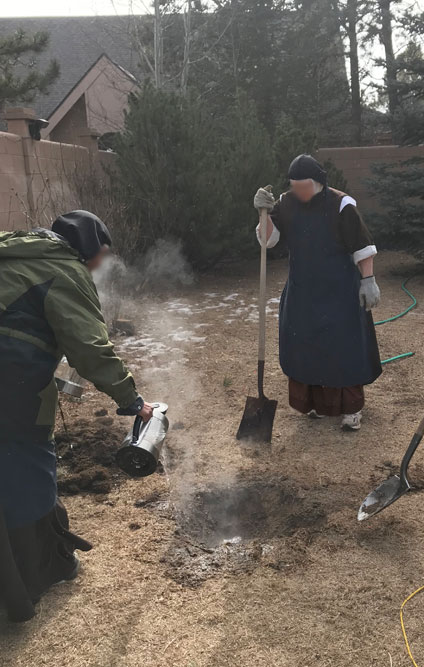



HELP US CONTINUE OUR LIFE OF PRAYER AND SACRIFICE
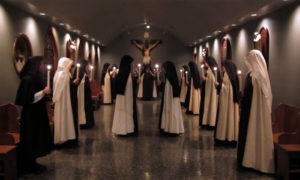
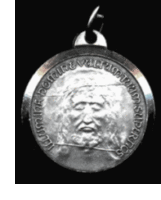
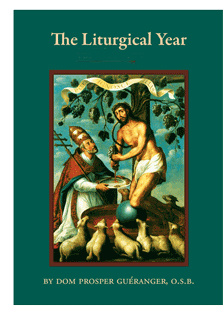
2 thoughts on “Lent, a Season of Healing”
Comments are closed.